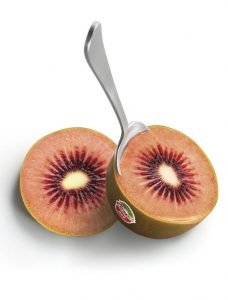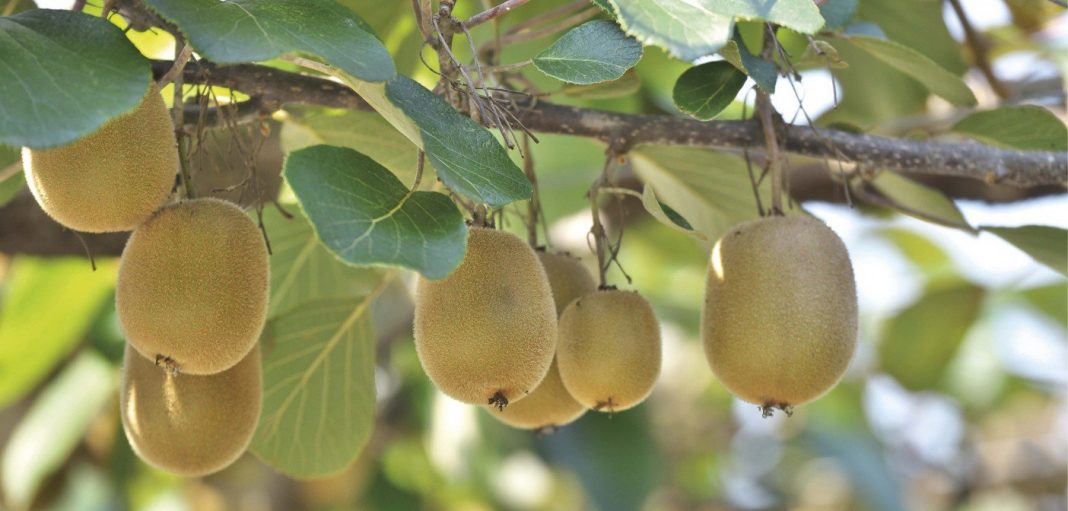Despite the strong success of Green and Gold kiwifruit, the industry will welcome more diversification.
After many years of delays and breeding challenges, Zespri has given the green light to growers wanting to trial the long-awaited Red variety of kiwifruit.
Prospects are that 150ha will initially be planted, depending upon budwood availability this autumn.

The pathway to Red’s commercialisation has been a long one. Initial hopes the launch would come almost a decade ago were dashed by the arrival of Psa.
The impact on the varieties cultivated by Plant and Food Research was devastating, wiping out 80 percent of the fruit’s first-generation cultivars. Promises the fruit would be finally available three years ago stalled. But the marketer has now announced a soft launch for issuing the new variety to growers.
The latest iteration of the breed is sourced from the cultivars that survived the Psa outbreak.
David Courtney, Zespri’s grower and alliance leader, said the latest cultivar had proved to be tolerant to Psa.
Another challenge has been ensuring the fruit had adequate shelf life to make it a viable exporting option.
Courtney said it was acknowledged the Red variety required softer handling and had a shorter shelf life. For this reason, Asia was most likely to be the first destination for the limited export volumes as production ramps up.
Trials will continue in other Zespri production regions in Northern Hemisphere to determine the commercial potential of the cultivar in different environments.
Supply chain test to come
Courtney said the fruit could only be fully tested when it was exposed to the entire supply chain environment.
Zespri growers in the Northern Hemisphere have faced a challenging year dealing with brown marmorated stink bug invasions and a deadly emerging fungal disease.
Meanwhile, consumers appear ready and waiting for a fruit described as having a “sweetish, berry like” flavour, with good reception from all exposed to it in sensory tests and early marketing trials.
The fruit’s red colour was linked to the presence of anthocyanin, a unique and naturally occurring pigment with the fruit linked to cardiovascular and cognitive health.
New Zealand consumers are expected to be able to enjoy the Red variety in selected supermarkets and fruit outlets in 2020 and 2021, as production volume increases.
New Zealand Kiwifruit Growers Incorporated chief executive Nikki Johnson welcomed a more diverse portfolio for growers, and said the diversification would support the fruit securing and maintaining supermarket shelf space.
However, she also cautioned growers to carefully assess risks associated with the new variety to make an informed decision if they decided to participate in any tender process to allocate bud wood for the proposed 150ha.
SunGold prolific
SunGold, the replacement gold kiwifruit for Hort 16a that was decimated by Psa, was initially available to growers at a licensing cost of about $7000 per ha in 2013. This year, the 700ha allocated is expected to cost $280,000 per ha.
So far SunGold has surprised growers by its prolific cropping ability, with yields as high as 18,000 trays per ha achievable with good management. It has also proven capable of being grown well beyond the traditional Western Bay of Plenty kiwifruit region, extending into Eastern Bay of Plenty, Hawke’s Bay and even Waikato.
Courtney said Zespri had not yet decided what mechanism it would use to distribute the initial Red crop supply.
Courtney said so far Red was only under trial across the Bay of Plenty, but had proven to be performing well, if not cropping as prolifically as SunGold.
The launch of Red is hoped to help Zespri reach its ambition to achieve $4.5 billion of exports by 2025. This year, the company is expected to exceed $2.0 billion in export sales.










